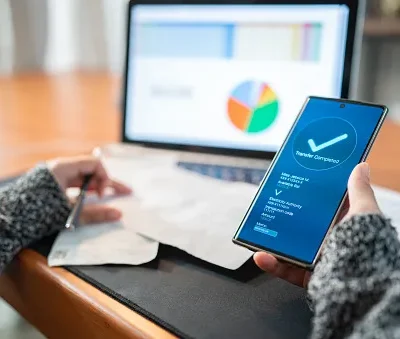
Is the internal developer portal “just a UI” for developer self-service? To understand why, let’s examine the software catalog, and then we’ll explain how it can evolve into a platform API. The rarity of such an event, especially with the path of totality crossing western New York has many curious about the nature of eclipses and the difference between a lunar eclipse and a solar eclipse. Portal-oriented B2B application integration also supports the best facility for web-allowing current enterprise systems for any gaols, involving B2B and business-to-consumer (B2C) selling over the internet.
To help you decide which tool you should focus your investment on, we’ve broken down each type of software application, the benefits and drawbacks of each, and what to consider when deciding which route to go. If you don’t have a custom design and your data is in Data Verse ” common data service before” then you should choose the model-driven app. The Canvas app provides you with a blank canvas and you will design your app screen-by-screen, which means that you will have full control of building your own design. Check also a side-by-side comparison where we list every major difference between website and web application and reasons to choose each option. This website is using a security service to protect itself from online attacks. There are several actions that could trigger this block including submitting a certain word or phrase, a SQL command or malformed data.
When it comes to technology, understanding the distinction between a portal and an app is crucial. While both serve as platforms for accessing information and services, they differ in terms of functionality and purpose.
Hybrid mobile applications are built using web technologies to allow for cross platform compatibility, but then are encapsulated within a framework that allows them to be installed and run on a device like a native application. Because the encapsulation is what allows cross-device compatibility, they don’t need multiple development cycles to ensure compatibility across operating systems or devices. While they may behave like a native application, they don’t necessarily offer the same speed and performance as one. A patient portal is a type of “customer-facing” portal to support interaction between patient and medical professionals, offering benefits to both parties. Patient portals often streamline services such as appointment management, HIPAA-compliant messaging, financial management (including online billing), secure viewing of health information, and intake questionnaires and more.
What is a Portal?
A portal is a website that serves as a gateway to a variety of resources and services. It acts as a centralized hub where users can access information, tools, and applications from different sources. Portals are commonly used by organizations to provide employees, customers, or partners with a single point of access to relevant content.
What are the benefits – and limitations – of attending the institutions? Spring marks the moment when high school students across the country are making choices about their future, whether that’s enrolling in a four-year college or university, entering the workforce or some combination of pathways. Ohio The Buckeye State is getting bisected by this year’s path of totality, plunging a number of the state’s most populous areas into darkness for a few minutes on Monday. A partial solar eclipse will be visible across the contiguous United States, so even if you’re not directly in the path, you should be able to see something special, weather permitting.
Key Characteristics of a Portal:
Approaching the types of mobile applications from a technical perspective, there are three broad categories of applications being deployed by developers to mobile devices in the modern mobile landscape. Mobile applications are software designed to run primarily on laptops, smartphones, tablets, or any other mobile electronic device. Mobile apps are purpose-built to solve specific business problems, accomplish specific tasks, or provide an entertaining experience. Unlike static websites, web applications are software programs hosted from a web server that users can access via a web browser.
Personalization: Portals often allow users to customize their experience by selecting which content or tools they want to see on their homepage.
Integration: Portals can integrate data and functionalities from multiple systems, providing a seamless user experience.
What is an App?
An app, short for application, is a software program designed to run on mobile devices or computers. Apps are typically created to perform specific tasks or functions, such as messaging, gaming, or productivity. Unlike portals, apps are standalone programs that do not rely on a web browser for access.
Key Characteristics of an App:
Self-contained: Apps are self-contained programs that can be downloaded and installed on a device without requiring internet connectivity.
Mobile: Many apps are designed for mobile devices, making them easily accessible on smartphones and tablets.
In conclusion, while both portals and apps provide access to information and services, they differ in terms of scope, functionality, and accessibility. Portals offer a centralized platform for accessing a wide range of resources, while apps are standalone programs designed for specific tasks. Understanding the differences between these two technologies can help individuals and organizations make informed decisions about which platform best suits their needs.



